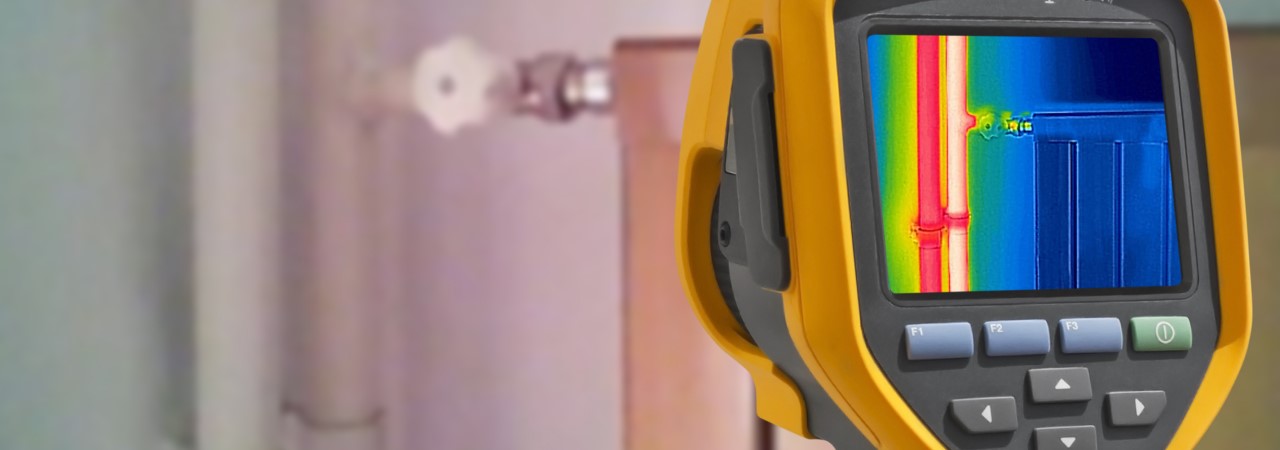Updated 13th August 2020
Have you noticed a water leak? Are you thinking about claiming on your house insurance? In this article we give an overview of the process for making a home insurance claim after a water leak. We’ll give an overview of the typical claims process, what you can and can’t claim for and some best practices.
Related articles: Which costs are covered by your policy?
Is plumbing covered by home insurance?
So you’ve noticed a water leak. It may be a large scale leak, in which case it would be difficult to miss. Or you’ve just discovered a smaller leak, which has lay hidden for some time and you’ve just noticed some of the damage it has caused. Let’s talk through some of the key considerations, step by step.
Should you make an insurance claim?
Whether or not you make an insurance claim will depend on a number of factors, including:
- The scale of the water leak and the damage it has caused to your home
- The level of insurance excess you will have to pay
- The effect on your no claims bonus
If the damage caused by your water leak is very small, then it may not be prudent to make an insurance claim. This is particularly true for insurance policies with high excess payments, or where losing your (unprotected) no claims bonus would result in a significant rise in premiums.
However be careful, not to underestimate the cost to repair the damage caused by the leak. Even smaller leaks can lead to damage that is costly to repair. For example, a small leak from an upstairs bathroom can cause a lot of hidden damage. As the water leaks down towards the lower floor, it can damage floorboards, ceiling plaster, decorations and electrical circuitry.
If you’re unsure, a leak detection and repair specialist will be able to provide an assessment of the damage caused.
Making an insurance claim
If you decide to make an insurance claim, then you need to do it quickly. One of the most common reasons for a home insurance provider to challenge or reject a claim, is when the claim has not been reported promptly. Don’t wait several days to report your claim, report it now!
Start documenting your claim
It is important that you document all aspects of your claim. This may prove to be vitally important later down the line. Create a file and start by documenting the leak and damage to your home. Write descriptions of the damage, take photographs, log calls to your insurer and save emails so they can easily be referenced.
Detecting the source of your leak / Trace and Access
It’s possible that you do not know the exact source of your water leak and therefore it cannot be repaired immediately. It may be hidden behind a wall, underneath a floor, or within a ceiling. If this is the case then you will need to trace the source of the water leak before repair works can begin.
Some home insurance policies include ‘Trace and Access’ cover. This will allow you to reclaim the cost of using a specialist to trace the source of the leak and expose it. Please note that often this does not include the cost to repair the leak, only to locate and expose it.
Repairing the water leak
It is important that you repair the water leak as quickly as possible. The longer the leak exists, the more damage it will do to your home. Your insurer will want you to demonstrate that you have taken reasonable steps to minimise the damage caused by the leak. Repairing the leak quickly is an important part of this.
Please note that many insurers will cover the cost of repairing your water leak. Many insurers will only compensate you for the cost to repair the damage caused by the leak, not the repairing of the leak itself. So be prepared to pay a specialist to repair the leak for you.
Agreeing the cost of repairs
The next stage of the process is to agree with your insurer the cost to repair the damage to your home. In many cases your insurer will ask you to provide quotes from multiple companies to repair the damage. In some cases they may recommend that you use a specific company. However, remember that as long as the cost is reasonable (and in line with other companies) you can choose the company that you would like to make the repairs.
In some cases your insurer will send a representative (a ‘loss adjuster’) to assess the damage to your home. Their job is to ensure that your insurer is not overpaying for repairs and that the repairs included are justified within your claim. Remember to keep all of your associated documentation and correspondence.
Starting the repairs
You may have to negotiate with your insurer (and their loss adjuster) before you are allowed to proceed with repairing the damage caused by the leak. Once a cost has been agreed, then repairs can commence. As your progress through the process, keep adding to your claims file. Document the repair process, take photographs and note communications with your repair company.
Completing repairs
Once repairs are complete, you will likely need to sign documentation to confirm you are happy with the repairs and that your case can be closed. Your insurer will then arrange for a payment to be made, either to you directly or to the company who have provided the repairs to your home. If payment is made to you, you should arrange for this money to be promptly transferred to the repair company.
Things to bear in mind
Act quickly
Don’t delay reporting your claim and repairing your leak. Remember that you need to demonstrate you have done everything reasonable to reduce the damage to your home.
Log everything
It is important to keep a ‘trail’ for your claim. You should start by documenting the leak and damage to your home, and follow this through all of the way to the end of your claim. Create a folder which, at a minimum contains the following tabs:
- Your water leak: Include notes and photographs of your leak and the damage to your home
- Correspondence with your insurer: Save all emails, letters and log telephone calls that have been made or received
- Cost to repair: Save quotes from repair companies and correspondence with your loss adjuster
- The repair: Take notes and photographs as repairs are made to your home
- Misc: There will probably be other types of correspondence, keep notes of them here
Common reasons for challenges to your insurance claim
Most home insurance claims are processed without undue hassle or delay. But approximately 10% are challenged or dismissed by an insurer. Here we discuss some of the common pitfalls that can be avoided when making a claim.
You do not act quickly enough
As we have mentioned several times, you need to act quickly to report your claim and repair your leak. This is one of the most common reasons for rejecting a claim. You need to demonstrate that you have acted quicky to both report the claim and minimise the damage caused by the water leak.
You have not taken reasonable steps to prevent the leak in the first place
You should have taken reasonable steps to keep your home in a good state of repair. This reduces the chances of a water leak. For example; if you have leaking water from your bath, but have not maintained the bath seal, then this may be cause for your insurer to challenge your claim.
Some examples include (but are not limited to):
- Have you kept bath/shower seals in good condition?
- Has your roof been maintained and checked at regular intervals *?
- Have you maintained your central heating system?
- Have windows been properly maintained?
- Are your appliances and their connections in good working order?
* If you have a flat roof, your insurance policy may require you to get your roof inspected at regular intervals (defined in your policy).
What you can’t claim for
The cost to repair your leak
Many home insurance providers will not cover the cost to repair your leak. They will only cover the cost to repair the damage to your home caused by the leak.
Damage not caused by the leak
You cannot claim to make repairs to your home, where the associated damage was not caused by your water leak. Your insurer will only cover the cost to restore your home to it’s previous condition.
General ‘wear and tear’
You cannot claim to repair items that have suffered general ‘wear and tear’. A specific incident must have occurred, which forms the basis for your claim. For example you cannot claim to maintain your roof or replace tiles that may become dislodged or damaged by weather, naturally over time.
Blocked drains
In the majority of cases blocked drains are caused by human error, for example using the drains to dispose of items that are unsuitable for drain disposal. There may be some exceptions to this case, however the vast majority of blocked drains will not be compensated by your insurer.
Your personal time managing your claim
You cannot claim compensation for the time it takes you to start and manage your insurance claim. The time taken can be substantial so you may wish to consider using a repair company with experience in water damage repair.
Summary
Providing that you have maintained your home to a reasonable standard, reported your claim quickly, document your claim and are responsive to your insurers requests, then your claim should be processed quickly and without unnecessary hassle. However, if you are experiencing difficulties, why not contact our team of experts who may be able to help?

 Pinpoint Trace and Access Ltd.
Pinpoint Trace and Access Ltd. Pinpoint Trace and Access Ltd.
Pinpoint Trace and Access Ltd. Pinpoint Trace and Access Ltd.
Pinpoint Trace and Access Ltd. Pinpoint Trace and Access Ltd.
Pinpoint Trace and Access Ltd. Pinpoint Trace and Access Ltd.
Pinpoint Trace and Access Ltd. Pinpoint Trace and Access Ltd.
Pinpoint Trace and Access Ltd. Pinpoint Trace and Access Ltd.
Pinpoint Trace and Access Ltd. Pinpoint Trace and Access Ltd.
Pinpoint Trace and Access Ltd. Pinpoint Trace and Access Ltd.
Pinpoint Trace and Access Ltd. Pinpoint Trace and Access Ltd.
Pinpoint Trace and Access Ltd.